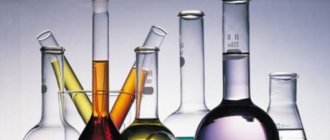Of all the possible types of burns, boiling water burns are considered the most common. Both adults and children can get burned by boiling liquid at home. Such an injury requires a quick response in providing assistance so that infection cannot penetrate into the affected tissue. In this situation, it is important to remain calm, the main thing is not to panic or get lost. Alleviation of the condition, minimization of possible consequences after a burn, directly depends on the efficiency and competence of the rescuer, the victim himself or the people who are nearby.
Degree of damage
A burn occurs when liquid heated to 100 degrees comes into contact with the skin. The dermis wrinkles and becomes blistered. To properly provide first aid for a burn and effectively treat a scalded area of the body, you need to know that burns vary in severity.
Each of these degrees is characterized by a different clinical picture.
- The mildest form is first degree burns. When exposed to boiling water, the skin turns red and the injured area causes pain. Sometimes swelling develops. Such lesions do not need special treatment; they go away on their own and leave no traces.
- A burn from boiling water of the second degree is characterized by partial damage to the skin layer under the epidermis, the appearance of thin-walled blisters (what to do and how to treat them if they occur, read here), filled with serous fluid. The tissues become red and the affected area is quite painful. Such injury is serious, since infection can penetrate into the wounds through damaged blisters. The healing process lasts from 10 to 14 days. With proper care there are no scars.
- A third degree boiling water burn (sometimes A and B) is much less common. The lesion is characterized by the appearance of thick-walled blisters on the skin. The blisters are filled with blood-containing fluid. The scales peel off or the damaged area dies, accompanied by inflammation and suppuration. The injury creates a deep wound, damaging the nerve endings. Its color is dark red. Hospitalization in such cases is mandatory. Skin grafts are often necessary. After the wound heals, scars remain.
- Exposure of the dermis to boiling water over a long period of time causes grade IV damage. Not only the skin is affected, but also muscle tissue. Blackening, peeling and thinning of the epidermis occurs. The victim is in shock. Domestic injuries of this severity practically do not happen.
How deeply the skin is damaged depends on the temperature of the liquid, the duration of its exposure, and also to what state the deep layers of the dermis are heated.
What not to smear
Doctors categorically prohibit the use of oils (olive, sunflower, butter). Such agents prevent complete heat exchange, increase the temperature, and can cause complications.
The use of alcohol infusions, brilliant green, and iodine is fraught with consequences. Solutions increase pain, dry out the skin, and can cause a chemical burn. The use of non-sterile products, salt, urine therapy and other dubious traditional medicine recipes can lead to infection and suppuration of the wound.
Getting burned at home is a common occurrence. It is important to remember that incorrect independent actions in case of burn injuries can lead to complications. It is better to seek advice from a specialist and strictly follow his recommendations.
Skin damage caused by exposure to high temperatures or chemical compounds is called burns. In everyday life, people usually get similar injuries from boiling water, hot steam, iron, oil and many other things. When a burn affects more than 15% of the body, immediate medical attention is needed.
At home, for relatively minor burns, you can use pharmaceutical preparations and effective folk remedies, which should be applied to the affected areas of the skin.
First aid for burns with boiling water
Getting scalded by hot water is not the most pleasant thing that can happen to you. But if this does happen, then the person nearby, or the victim himself, must do everything possible to alleviate the general condition and prevent negative consequences from the trauma suffered.
First aid for a burn with boiling water should consist of the following sequential actions:
- Quickly and as carefully as possible, remove wet clothes, trying not to touch the affected skin and not damage the resulting blisters. Hot tissue significantly worsens the victim's condition. It is very important to pour cold water over the items before removing them. In some cases, it is recommended to use scissors.
- Cool the part of the body affected by boiling water. To do this, depending on the degree of the burn, it is immersed in a container of water at room temperature, or cooling bandages are applied. If burns from boiling water are large, too cold water can cause shock in a person.
- Apply remedies for burns with boiling water to the injured body (more details: “ointment for burns with boiling water”). Do not use kefir, sour cream or fat for this. A film is formed on the skin lubricated with them, which reduces heat transfer. This significantly worsens the condition of the injured person.
- Anesthetizing the burn with painkillers and anti-burn medications is indicated for severe pain. If this is not available, simply apply a loose aseptic bandage to the wound.
If a hand burn or a leg burn occurs with boiling water, you need to raise these parts of the body up to prevent the formation of swelling or reduce its intensity.
Folk remedies for burns
Many people are afraid to apply chemicals to damaged tissue, as a result of which quite effective home recipes have been invented.
- Potato-honey compress. Grate raw potatoes (100 g), combine with a spoon of honey and mix. Place the product in a bandage and apply to the burn for 1-2 hours. Perform the procedure three times a day.
- Aloe application. Take the succulent leaves of the plant, chop finely and squeeze out the juice. Soak a bandage in it and apply it to the burn.
- Application with tea. It is necessary to brew strong natural tea and cool to a temperature of no more than 15°. Gauze is moistened in the tea leaves and applied to the affected area. Tannins and antioxidants prevent inflammatory processes and infection, stimulate the formation of new skin cells.
- Ointment from resin and propolis. Take propolis, spruce resin and lard in a 1:1:1 combination. Boil the mixture, stirring, then cool to room temperature. It is necessary to apply 2 times a day for 2 days (for shallow burns).
Many people are confused when their loved one is burned by boiling water. But don’t panic, because every minute of a burn brings new damage to the skin. It is necessary to stop the process as soon as possible and be sure to see a doctor.
What should you not do if you are burned by boiling water?
We figured out how to help with a burn from boiling water. Now remember what you are prohibited from doing so as not to aggravate what happened and further harm your health:
- Do not cool the wound with ice, apply cotton wool to the burn, or cover it with a band-aid.
- It is not recommended to use iodine or brilliant green, or alcohol tinctures for treatment.
- Do not try to puncture blisters or pop them yourself.
In case of injuries of the third and fourth degrees, it is impossible to do without specialized medical care. Don't hesitate and call an ambulance.
Prohibited actions
When providing first aid after scalding with steam or boiling water, you must not:
- Immediately after receiving a burn, apply medicinal or pain-relieving ointments to the affected hand.
- The skin temperature after such an injury is very high, and the ointment applied to it impairs its cooling. Therefore, first reduce the temperature of the injured surface with a cold bath or compress.
- Puncture or remove blisters formed from burns.
- The risk of secondary infection of the wound surface increases. Skin regeneration and healing processes slow down.
- Use for treating burned areas:
- toothpaste;
- urine;
- vinegar;
- alcohol-containing liquids: brilliant green, vodka, tinctures of medicinal herbs.
- In case of emergency, apply sea buckthorn oil to the affected arm.
- It is used in later stages to speed up regeneration and prevent scarring.
- If you receive burns, especially severe ones, leave clothing on the affected area.
- If pieces of it stick to the wound, you should not try to tear them off. The fabric is carefully cut around the stuck area.
- To wash burned skin, use soda solutions, kefir, and diluted lemon juice.
- Only clean water should be used. Acids and alkalis irritate the skin and increase pain, and fermented milk products increase the risk of infection.
Burns from boiling water: treatment at home
If you slightly burn your skin with hot water, and the resulting wound is of the first or second degree of severity, then you can cure such a lesion yourself. What to do if you are burned by boiling water at home?
The most common method of home therapy for this household injury is the application of bandages with special medications. Bepanten ointment is considered the most effective. A bandage with this remedy should be applied once and worn for four to five days until the wound heals.
How to treat a second degree burn with boiling water? Such injuries first require medical examination. After the doctor sanitizes the affected surface, he will tell you what needs to be done next and how to treat the wound.
Burns from boiling water are treated with bactericidal ointments. These include Levomekol and Streptomycin. The wound is treated with antiseptic agents - Chlorhexidine or Dimexide. The dressings are changed every two to three days. The skin that has peeled off must be removed and the affected area should be washed aseptically. Olazol, a drug made in the form of an aerosol, is good for blisters.
Penicillin tablets help with boiling water burns. Sprinkle the wound with the crushed preparation. You can also buy gel dressings in pharmacies. They prevent the development of infection in wounds formed after blisters. Such special products do not stick to the skin and are easy to change if necessary.
Treatment of a burn on the face, neck or groin is carried out by lubricating the wounds; they are not bandaged, but left open. Treatment of burns with boiling water requires compliance with hygiene rules.
If the inflammatory process on the burned skin does not stop, signs of infection appear, and the condition of the wound does not improve within a week, then in this case you need to seek medical help.
Folk remedies
How to treat burns from boiling water besides pharmaceutical drugs? Traditional medicine has in its arsenal a large number of recipes that help relieve pain and heal a wound.
Folk remedies for burns with boiling water also include medicinal plants. Sea buckthorn, oak bark, plantain leaves, blueberries, and echinacea are considered quite popular.
Home treatment includes the use of the following products:
- Potatoes are the best remedy. It is considered the most effective pain reliever. It also prevents the formation of blisters. A paste is made from peeled potatoes and applied to the affected area for an hour. It needs to be changed every 5-10 minutes.
- Egg white. They lubricate the wound with it. Helps even with severe burns.
- Flour. An excellent anti-blister product. It is necessary to sprinkle the burned surface as intensively as possible.
- Beet. Porridge prepared from it relieves pain and swelling.
- Pumpkin has a cooling effect. It is crushed, grated, and applied to the burn.
- Cabbage has adsorbent properties.
For burns from boiling water at home, use ordinary brown laundry soap. Moisten a bar of soap and rub it on the scalded area. This method removes redness and relieves pain.
Another common remedy for burns from boiling water is urine. It contains a huge amount of useful substances. Urine therapy is effective against swelling and inflammation.
Doctors allow the use of folk remedies only for minor lesions of the skin. Do not count on their effectiveness if you have a second or higher degree burn. In such cases, all that needs to be done in case of a burn is to go to the hospital. Timely medical assistance is the key to successful treatment.
Treatment options for blisters
Is it possible to burst a burn blister? If bubbles have formed at the burn site, they should never be burst. Otherwise, an infection will get into the wound and treatment will be delayed. Skin with blisters is also treated with antiseptic ointments, solutions and aerosols, but without touching the blisters. For example, you can use Solcoseryl. It will dry out the resulting ulcers, relieve pain and burning and speed up the healing of wounds. After 2-3 days you can use Levomekol. It is applied in a thick layer to wounds and burns and bandaged. The dressing is changed every 20 hours . It disinfects and tightens wounds and prevents suppuration of ulcers.
What to do if a child gets burned?
Children are often burned by boiling water, this is due to their restlessness and curiosity. The younger the baby, the greater the risk of scalding. If you don’t keep an eye on your child, you can end up in such a difficult situation. When there is a child in the house, you need to try to exclude any possibility of injury to him by hot liquid.
Useful link: burn in a child: what to do
You should not bathe a child if a large area of skin is affected. If a child is burned by boiling water, then it is imperative to call an ambulance. The doctor must determine how and with what to treat the burn.
Children are much more susceptible to burns because their skin is very sensitive. Your home medicine cabinet should always contain medications that have an analgesic effect. Immediately after the incident, follow the first aid rules described in this article.
Differences in scalding with boiling water and steam
It seems to people far from physics that boiling water is comparable to steam in temperature, but this is not so. The steam is noticeably hotter, and if it is still under pressure, then significantly hotter. Therefore, steam burns are deeper, more severe, and more dangerous.
But that is not all. When boiling or hot water comes into contact with the skin, it quickly cools to normal temperature. The steam first turns into a liquid state, accompanied by the release of additional heat. This increases the severity of the burn.
The situation is completely different when we talk about liquids in general. For example, oils can heat up hundreds of degrees higher than the temperature of steam. But that is another topic.











